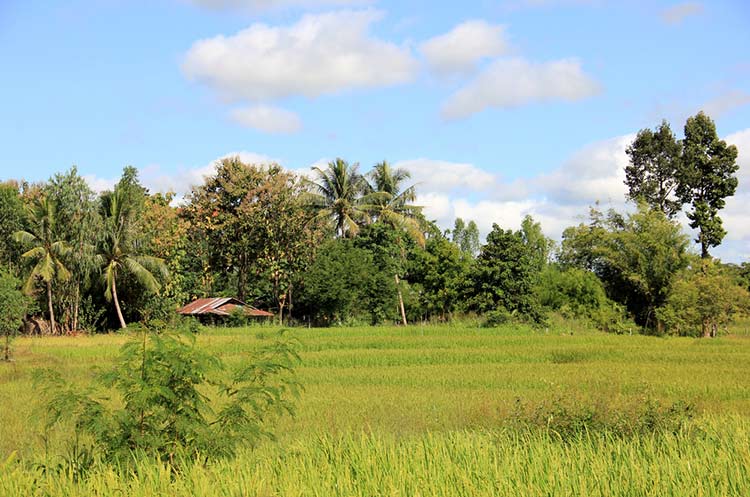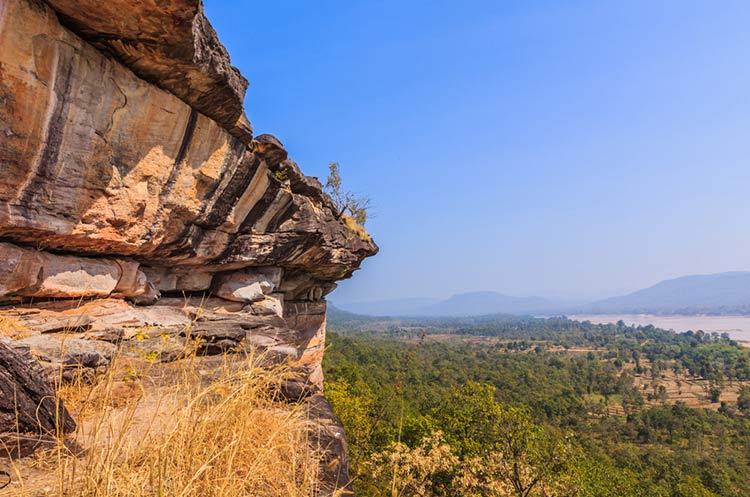
Northeast Thailand
Provinces & attractions of Isan
The Northeast of Thailand, a region not much visited by foreign tourists, comprises of nearly two dozen provinces. The area known as “Isan” is one of Thailand’s poorest regions. The Northeast borders Laos and Cambodia. The Mekong, one of the world’s longest rivers, forms the border between Thailand and Laos for hundreds of kilometers.
In much of the area Isan language is spoken, which differs from Central Thai and is closer to Laotian language. Famous food for the region are sticky rice and Som Tam (papaya salad). Much of the Northeast is rural with the majority of its inhabitants employed in farming. Many Isan people have moved to Bangkok to find work.
The history of the Northeast
Several areas of Northeast Thailand have been settled for thousands of years. A great number of dinosaur fossils and dinosaur steps have been found at Phu Wiang National Park in Khon Kaen, as well as prehistoric skeletons and tools.
Other prehistoric sites in the Northeast include Ban Chiang in Udon Thani, Ban Prasat in Nakhon Ratchasima, Phu Phra Bat Historical Park in Udon Thani, Non Mueang in Khon Kaen and Ban Kan Luang archaeological site in Ubon Ratchathani.
The Dvaravati period lasted from the 6th until the 11th century. Two of the very few remaining examples of Dvaravati architecture can be found at Si Thep Historical Park in Phetchabun province and Mueang Sema Historical Site in Nakhon Ratchasima.
Northeast Thailand during the Khmer era
After the Dvaravati era came the rise of the Khmer empire, one of the greatest civilizations of South East Asia. Much of the lower part of Isan was under their control for centuries. A great number of Khmer sanctuaries were build, of which many remain in various states of preservation. The Khmer built ancient roads to connect the outposts of their empire with the capital Angkor Thom.
One of those roads led from Angkor to Phimai with a number of temples in between, the best known being Phimai and Phanom Rung. Other Khmer temples can be found in several provinces of the Northeast, including Surin, Nakhon Ratchasima and Buriram.
After the decline of the Khmer empire (halfway 14th century) much of the area came under the influence of Lan Xan Kingdom from Laos.
Attractions in Northeast Thailand
The Northeast offers many cultural, historical and natural attractions. Along the best known festivals are the Mekong fireballs of Nong Khai, the candle festival of Ubon Ratchathani and the elephant round-up in Surin.
Temples
The region houses some highly revered and ancient temples such as the Wat Phra That Phanom which enshrines Buddha relics, and some of the country’s most beautiful chedi’s like the Phra Maha Chedi Chai Mongkol in Roi Et province.
Khmer sanctuaries
The Khmer from Angkor have left behind impressive sanctuaries, including those of Phimai, Phanom Rung and Muang Tum.
Handicrafts
Local villagers have been producing various handicrafts for generations, as a means to obtain supplementary income after the rice harvesting season. Handicrafts as silk, rattan, silver and gold ware handicrafts are made in handicraft villages like Dan Kwian pottery village in Nakhon Ratchasima and several villages in Surin.
Getting to Northeast Thailand
The major cities of the Northeast are well connected to Bangkok by air, train and bus. For detailed information, check the “Getting to” section of each province.
Air
Most provincial capitals of the Northeast have an airport with regular flights from Bangkok.
From Bangkok Suvarnabhumi airport flights are operated by Thai Airways.
From Bangkok Don Muang airport by Air Asia and Nok Air.
Train
Most of Isan’s major cities are connected to Bangkok by rail. The State Railway of Thailand operates a Bangkok to Nong Khai service, as well as a Bangkok to Ubon Ratchathani service.
For details, check the State Railway of Thailand website.
Bus
All provincial capitals are connected to Bangkok by regular bus service. Several private and government bus companies offer ordinary, air conditioned and VIP buses that depart from Bangkok’s Northeastern bus terminal Mo Chit II on Kamphaeng Phet 2 road.





